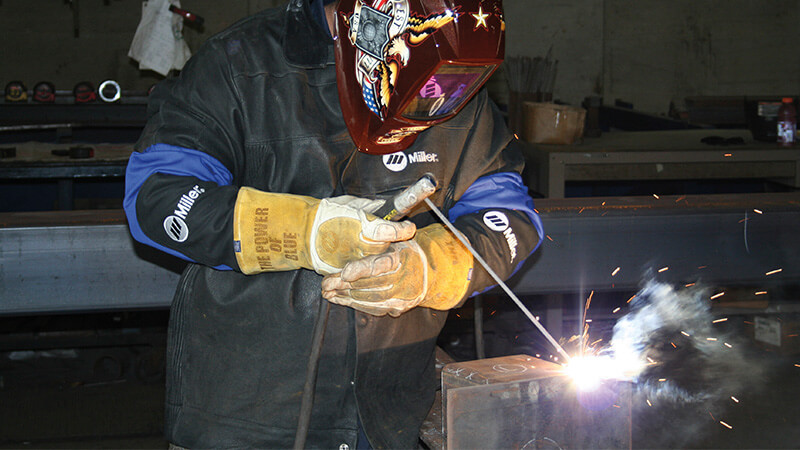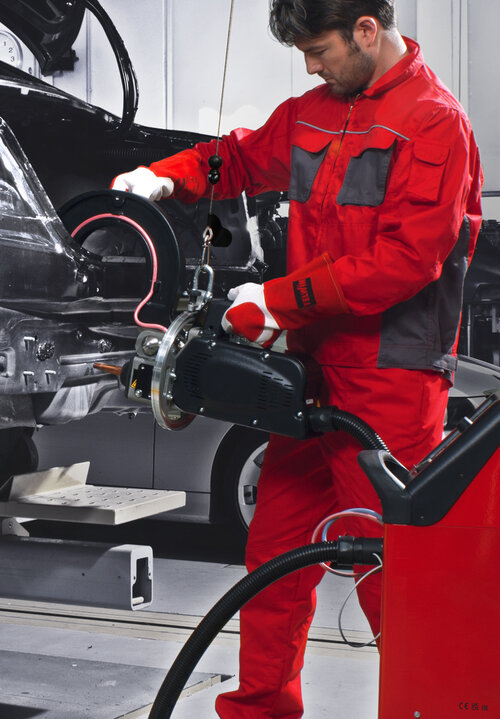Everything about Welding: Trick Insights Into Techniques and Best Practices for Success
Welding incorporates a selection of methods, each fit for details materials and applications. Comprehending these methods, such as GMAW, SMAW, and TIG, is essential for attaining suitable outcomes. Moreover, the best devices and safety and security methods can not be ignored. As prep work and troubleshooting play vital duties in the welding process, grasping these components can considerably improve the high quality of the end product. What are the vital variables that ensure an effective weld?
Recognizing Different Welding Strategies
Welding strategies encompass a selection of techniques, each suited to details applications and products. Amongst the most usual strategies are Gas Metal Arc Welding (GMAW), Shielded Steel Arc Welding (SMAW), and Tungsten Inert Gas Welding (TIG) GMAW, additionally known as MIG welding, is popular for its speed and flexibility, making it suitable for slim materials. SMAW, or stick welding, is favored for its simplicity and effectiveness in exterior atmospheres, especially with thicker steels. TIG welding offers precision and control, making it ideal for elaborate job and non-ferrous metals (Belgrade). Each strategy has its one-of-a-kind benefits and factors to consider, allowing welders to select the most effective technique based upon the job's demands, product kind, and desired results. Comprehending these strategies is necessary for effective welding
Necessary Welding Equipment and Tools
While numerous welding methods call for particular abilities, the ideal equipment and devices are similarly essential for attaining quality results. Crucial welding equipment includes welding devices, which vary depending on the technique-- such as MIG, TIG, or stick welding. Protective gear, consisting of headgears, gloves, and aprons, guarantees safety and security and comfort throughout the procedure. Additionally, clamps and fixtures assist secure materials in position, making sure accuracy in welds. Consumables like welding rods, cable, and shielding gas are additionally vital components that affect the high quality of the weld. Devices such as mills and cutters assist in surface preparation and post-weld ending up, adding to an expert end result. Buying top notch tools eventually improves the performance and performance of welding jobs.
Safety Practices in Welding
Appropriate safety techniques are important in the welding industry to safeguard workers from possible hazards. Welders should put on suitable personal safety tools (PPE), consisting of headgears with proper shading, gloves, and flame-resistant clothes. Appropriate air flow is important to minimize exposure to damaging fumes and gases produced throughout the welding procedure. In addition, employees should be trained in the right handling of welding devices to avoid mishaps. Fire precaution, such as keeping flammable materials far from the welding area and having fire extinguishers conveniently available, are needed. Normal inspections of tools and work spaces can help recognize prospective dangers before they result in mishaps. By adhering to these safety and security practices, welders can produce a safer working environment and lessen threats related to their profession.
Readying Materials for Welding
Preparing materials for welding is a vital step that significantly affects the quality and honesty of the end product (Montana Mobile Welding and Repair Fabrication). Proper preparation involves cleaning up the surfaces to remove contaminants such as dust, corrosion, and oil, which can endanger the weld. Strategies such as grinding, sanding, or utilizing solvents are typically employed to accomplish a tidy surface area. Furthermore, making sure that the products mesh comfortably is crucial; gaps can result in weak welds. It's likewise crucial to take into account the placement and positioning of the parts, as this will certainly impact the convenience of welding and the final outcome. Lastly, selecting the proper filler product and ensuring compatibility with the base steels is important for attaining strong, resilient welds
Tips for Achieving High-Quality Welds
Attaining premium welds requires attention to detail and adherence to finest techniques throughout the welding process. Proper joint prep work is necessary, making certain surface areas are tidy and totally free from impurities. Picking the ideal filler product and welding method based upon the base metals is essential for perfect bonding. Keeping constant travel rate and angle while welding can protect against issues and advertise uniformity. Additionally, managing heat input is crucial; extreme warmth can result in bending and damaged joints. Consistently inspecting the welds during the process permits for instant changes if necessary. Using proper post-weld treatments, such as cleansing and stress and anxiety alleviation, can improve the longevity and honesty of the weld, eventually guaranteeing an effective result.
Fixing Usual Welding Issues
Welding commonly presents obstacles that can influence the top quality and integrity of the last item. Common concerns such as porosity, inconsistent weld beads, and getting too hot can develop, each needing certain troubleshooting methods. Understanding these issues is crucial for welders to boost their abilities and accomplish perfect outcomes.
Porosity Troubles Clarified
Porosity can usually be neglected, it remains a critical concern in welding that can endanger the integrity of an ended up product. Porosity describes the existence of tiny gas pockets within the weld bead, which can deteriorate the joint and lead to early failure. This problem normally occurs from contaminants, moisture, or find here improper protecting gas protection throughout the welding procedure. To alleviate porosity, welders must validate that the base materials are tidy and dry, make use of proper protecting gases, and preserve constant welding specifications. Routinely checking the tools and setting can additionally help recognize prospective problems prior to they manifest in the weld. Resolving porosity efficiently is vital for attaining strong, sturdy welds that fulfill high quality standards.

Inconsistent Weld Beads
Inconsistent weld beads can significantly influence the quality and toughness of a finished product. Numerous variables add to this problem, consisting of inappropriate travel speed, inaccurate amperage settings, and inconsistent electrode angles. When the welder moves also rapidly, a grain may appear narrow and do not have additional info penetration, while relocating as well slowly can create excessive accumulation. Additionally, using the wrong amperage can result in either undercutting or extreme spatter, both of which compromise weld stability. The welder's method, such as irregular lantern motion, can additionally lead to unequal grain look. To mitigate these troubles, welders need to focus on maintaining steady, controlled movements and making certain appropriate equipment setups to achieve uniformity in their welds. Consistency is vital to attaining strong and trustworthy welds.
Getting Too Hot and Warping Issues
Excessive warm throughout the welding procedure can bring about considerable overheating and contorting concerns, affecting the architectural integrity of the workpiece. These problems typically materialize as distortion, which can endanger alignment and fit-up, making more assembly testing. Factors adding to overheating include the selection of welding specifications, such as voltage and take a trip speed, along with the kind of material being welded. To alleviate these concerns, welders should keep constant travel speed and appropriate warmth input while checking the work surface temperature level. Furthermore, preheating or post-weld warmth treatment can aid alleviate stresses triggered by fast air conditioning - Belgrade. Normal assessment and adherence to best methods are important in protecting against overheating and making certain the longevity and dependability of welded structures
Often Asked Questions
What Are the Career Opportunities in the Welding Sector?
The welding industry uses diverse profession opportunities, including settings as welders, engineers, instructors, and inspectors. Specialists can operate in production, building, aerospace, and vehicle sectors, gaining from solid demand and competitive wages in different duties.
Just How Can I Enhance My Welding Speed Without Giving Up High Quality?
To improve welding speed without sacrificing quality, one ought to practice effective strategies, maintain equipment, enhance settings, and enhance hand-eye sychronisation. Normal training and looking for responses can likewise considerably add learn this here now to accomplishing quicker, high-quality welds.
What Qualifications Are Offered for Welders?
Countless accreditations exist for welders, consisting of those from the American Welding Culture (AWS), the National Center for Building Education and Research (NCCER), and various industry-specific organizations. These qualifications enhance employability and show ability efficiency.
Just How Does Welding Affect the Properties of Metals?
Welding influences the buildings of metals by changing their microstructure, which can cause modifications in strength, hardness, and ductility. Warmth input and air conditioning rates during the procedure greatly influence these product attributes.
Can I Bonded Dissimilar Metals Together?

Comments on “Reliable weld inspection practices shared by Montana Mobile Welding and Repair”